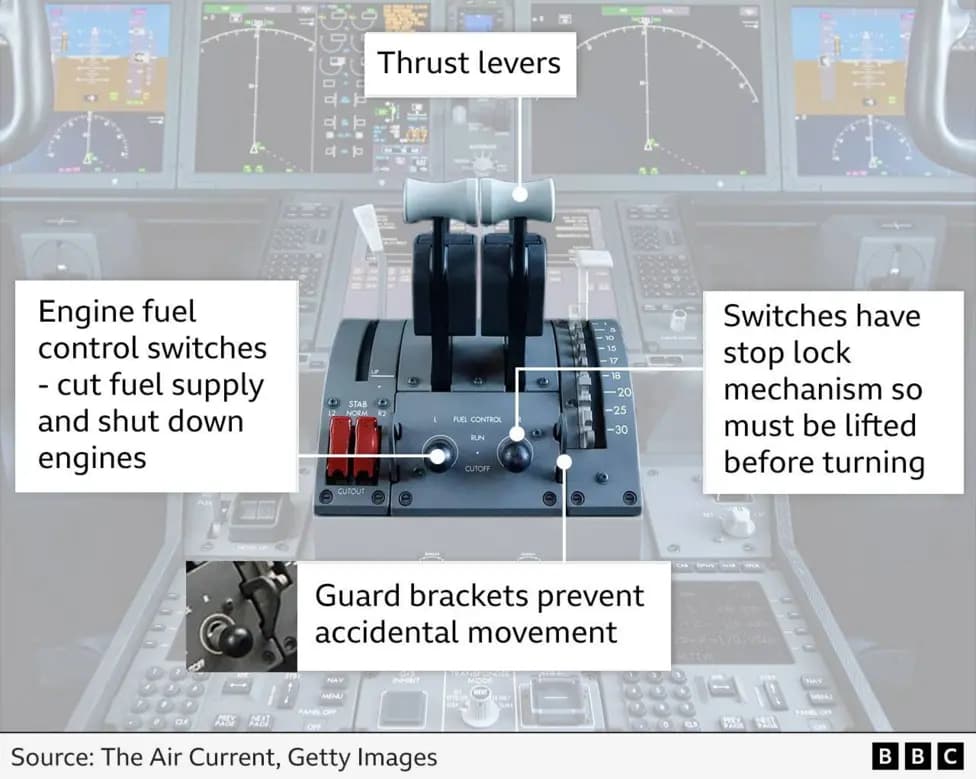In this video there is a clip of a 787 not retracting it wheels after take off and the flaps “look” up. It is at 0.53
Three minutes of aviation
You’ve answered your own question.
Sad days. But looks very cut and dry.
I think general consensus in the aviation industry is its either
A) Pilot Error
B) Complete Hydrolic Failure
Theres all sorts of reports coming out that the flight before on that aircraft had a series of tech issues
I’m waiting for the ICAO Annex 13 report with so many things that could have caused the crash…
A is possible - but many protection systems in place for performance & configuration settings.
B - unlikely - B787 has 3 systems. Last total hydraulic system failure I remember was an A300-B4, impacted by a MANPAD, hit the wing root, got all 3 systems. The flt engineer was one of my ex-colleagues on HeavyLift - he looked at his panel & apparently threw the checklist over his shoulder!
Going back to “A” for other reasons - there have been previous near-accidents where the flight guidance panel was set incorrectly (altitude of say 100 ft), so when the autopilot was engaged at 400 ft, the aircraft did “as instructed” & descended.
Not 100% of the sequence of events, but possible from the very brief Mayday call that this occurred beofre the autopilot would have been engaged.
Some high-level technical discussions elsewhere looking at the possibility of an electrical problem with the autothrottle = engines powered back unexpectedly.
The singular form of MANPADS is MANPADS. Sorry, but it’s a bugbear of mine. The S stands for system (nothing to do with plurality).
Well, all gone very quiet on any release of informattion - it seems that both data recorders have been discovered.
Educated inputs from B787 pilots on others forums suggest:
The RAT was deployed (visual evidence including the very distinctive noise).
The APU had gone into an auto-start as the APU door was found to be partially open.
Whilst down, the undercarriage most likely had started an UP cycle, but was paused very shortly after initiation - the nosewheel & main gear bogies had moved into the initial tilt position, but then stopped any further travel.
The RAT auto-deploy & APU auto-start would only occur after significant / total loss of engine power.
Now we get into the unknown “why” did the engines lose power?
Several complicated theories relate to some kind of issues with the Thrust Control Malfunction Accommodation (TCMA) units - these are designed to prevent overspeed or other potentially damaging / dangerous situations. There have been problems with B787 TCMAs (Jan 2019 at least) before & associated engine bulletins issued.
The Indian CAA (DGCA) issued an Enhanced Safety Inspection notice in very quick order (which seems to concentrate on fuel-related areas) but I suspect that was “belts & braces” before specific points emerge from the investigation.
Presumably you’ve seen the prior clip from the flight before the crash that showed that nothing electrical was working inside the aircraft?
Yes - not enough to form an opinion - although apparently it was a ferry sector in with all the IFE turned off.
Oh dear, this isn’t so good.
Important to remember that Boeing have form for blaming the pilots until they’re red in the face until undeniable evidence comes out that it was a mechanical issue.
Eeek.
Bad drills and no confirmation between pilots.
Unrecoverable at such low altitude.
Sounds more and more like they sealed their own fate.
This is the 30 day interim report release, so unlikely to have had much (if any) input from Boeing & still exceptionally bare on expanded details.
This isn’t Boeing saying this, it’s AAIB going from CVR transcription and no doubt looking at data from the FDR giving the initial Annex 13 report. Boeing will have been involved in the investigation, but can have no part in generating the report.
From a quick cursory look at the overhead panel layout, there doesn’t appear to be anything nearby that it could have been mistaken for either?
Aren’t they also gated switches to prevent them being brushed and knocked off or the internal gating mechanism failing and releasing them to off?
Cut-off switches from my years of virtual aviation flying need to be lifted and pulled back. I don’t think that if you knock them by accident they will move. I find it strange that they would be anywhere near the cut-off switches during flight, as they are below the throttles and nowhere near the gear or flaps.
That what I was thinking, but never had anything to do with a Boeing Airframe; Lockheed, Panavia, Sepecat, Westland, Hawker, Blackburn, Supermarine and on - yes to having worked on and around.
Not overhead; below the thrust levers. Yes, they are gated and protected. Have a look at the Blancolirio YouTube channel for details.
Could be mechanical; could be inadvertent by pilot(s); could be deliberate by pilot(s). We may never know which as the switches were badly damaged in the crash and the CVR doesn’t help much.
